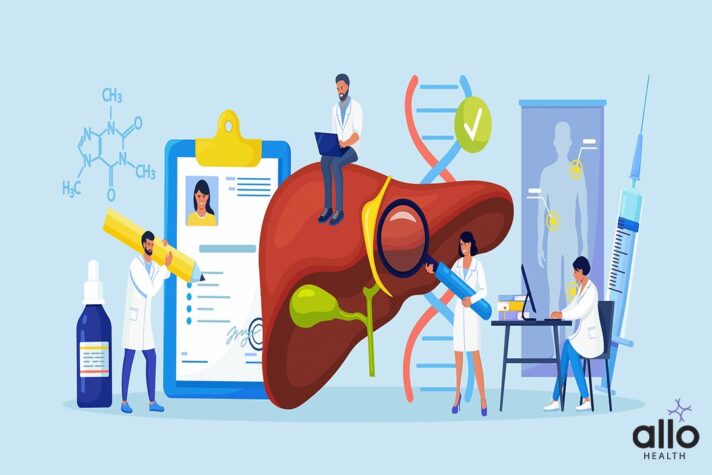What is Hepatitis E?

Allo Health is dedicated to personalized well-being, offering support and trusted information tailored to individual health goals. The platform emphasizes human-generated content, led by a distinguished medical team of experts, including physicians and sexual health specialists. Their commitment to credibility involves rigorous fact-checking, authoritative research, and continuous updates to ensure accurate, up-to-date information. Allo Health's unique approach goes beyond conventional platforms, providing expert-led insights and a continuous commitment to excellence, with user feedback playing a crucial role in shaping the platform's authoritative voice.

Dr Sanina Mansoor holds MBBS degree from Yenepoya university,Mangalore.She has 8 years of experience working as a medical officer at various health centres and medical colleges.
Why This Was Upated?
Our experts continually monitor the health and wellness space, and we update our articles when new information became available.
Updated on 10 February, 2025
- Article was updated as part of our commitment to diversity, equity, and inclusion.

"The following blog article provides general information and insights on various topics. However, it is important to note that the information presented is not intended as professional advice in any specific field or area. The content of this blog is for general educational and informational purposes only.
Book consultation
The content should not be interpreted as endorsement, recommendation, or guarantee of any product, service, or information mentioned. Readers are solely responsible for the decisions and actions they take based on the information provided in this blog. It is essential to exercise individual judgment, critical thinking, and personal responsibility when applying or implementing any information or suggestions discussed in the blog."
Hepatitis E is a viral liver disease caused by the Hepatitis E virus (HEV). It is an inflammation of the liver, a vital organ responsible for numerous functions including detoxification, protein synthesis, and the production of biochemicals necessary for digestion. Unlike other forms of hepatitis, Hepatitis E is primarily spread through the fecal-oral route, often due to contaminated water supplies. This article delves into the nature of Hepatitis E, its transmission, symptoms, diagnosis, treatment, and prevention.
Transmission
- The primary mode of Hepatitis E transmission is through the ingestion of water contaminated with fecal matter containing the virus. This is particularly common in regions with poor sanitation and inadequate water treatment facilities.

- Outbreaks are frequently reported in developing countries in Asia, Africa, and Central America. Additionally, consumption of under-cooked meat from infected animals, particularly pork and deer, has been identified as a potential transmission route, although this is less common.
- In rare cases, Hepatitis E can be transmitted through blood transfusions, organ transplants, and from mother to child during pregnancy. However, these modes are not the primary contributors to the global burden of the disease.
Symptoms
Hepatitis E presents a range of symptoms, which can vary from mild to severe. The incubation period for the virus is typically between two to ten weeks. Common symptoms include:
- Jaundice: Yellowing of the skin and eyes
- Fatigue: A feeling of extreme tiredness
- Abdominal Pain: Particularly in the liver area
- Loss of Appetite: Reduced desire to eat
- Nausea and Vomiting: Feeling sick and vomiting
- Fever: Elevated body temperature
- Dark Urine and Pale Stools: Changes in urine and stool colour

In most cases, symptoms last for a few weeks to several months and then resolve on their own. However, in pregnant women, particularly during the third trimester, the disease can be more severe and potentially life-threatening. Hepatitis E can lead to acute liver failure in pregnant women, posing significant risks to both the mother and the fetus.
Diagnosis
Diagnosing Hepatitis E involves a combination of clinical evaluation and laboratory tests. The following methods are commonly used:
Serological Tests: Detection of anti-HEV antibodies (IgM and IgG) in the blood. IgM antibodies indicate a recent infection, while IgG antibodies suggest past exposure or immunity.
Polymerase Chain Reaction (PCR): This test detects HEV RNA in blood or stool samples, providing a definitive diagnosis.
Liver Function Tests: Elevated liver enzymes (ALT and AST) indicate liver inflammation or damage.
Timely diagnosis is crucial for effective management and to prevent the spread of the virus, especially in outbreak situations.
Treatment
There is no specific antiviral treatment for Hepatitis E. The disease is typically self-limiting, and supportive care is the mainstay of treatment. This includes:
- Rest: Adequate rest to help the body recover.
- Hydration: Maintaining fluid balance, especially if vomiting is severe.
- Nutritional Support: Ensuring a balanced diet to support liver function.
- Avoiding Alcohol: Refraining from alcohol to reduce liver strain.
In severe cases, particularly for patients with pre-existing liver conditions or pregnant women, hospitalisation may be necessary.
In such instances, medical professionals closely monitor the patient’s liver function and overall health.
Prevention
Preventing Hepatitis E primarily involves ensuring access to clean water and maintaining good sanitation practices. Key preventive measures include:
- Safe Drinking Water: Boiling water or using water purification methods in areas with unsafe water supplies.
- Proper Sanitation: Ensuring proper sewage disposal and avoiding contamination of water sources.
- Food Safety: Cooking meat thoroughly, especially pork and game meat.
- Hygiene Practices: Regular hand washing with soap and clean water, especially before eating and after using the toilet.
For travellers to endemic regions, it is advisable to avoid drinking untreated water and eating uncooked or undercooked food.

24x7 AI backed chatbot for all your sexual health related queries
Vaccination
As of now, a vaccine for Hepatitis E (HEV 239) is available in China, offering protection against the virus. However, it is not widely available globally. Efforts are ongoing to make the vaccine more accessible, particularly in regions with high incidence rates.
Hepatitis E is a significant public health concern, particularly in developing countries with inadequate sanitation and water treatment facilities. Understanding the transmission, symptoms, and preventive measures is crucial in combating this disease. While it is generally self-limiting, the potential for severe outcomes, especially in vulnerable populations like pregnant women, underscores the importance of continued research, improved sanitation, and increased access to vaccination. By raising awareness and implementing effective public health strategies, the global burden of Hepatitis E can be significantly reduced.








































